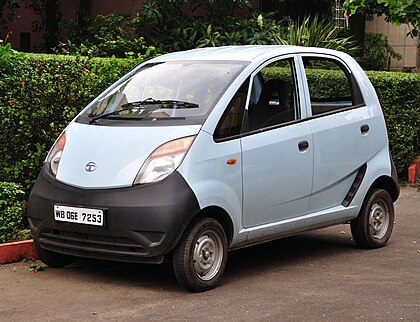Tata Nano, the world’s cheapest car, was launched in 2008, breaking ground towards making car ownership affordable for many Indian families. However, with various market challenges, it slowly lost its popularity. Now, with the vast demand for affordable EVs, Tata will revive Nano with a new electric punch and is going to create excitement everywhere in the automobile world.
WHAT TO EXPECT FROM DESIGN AND FEATURES?
The Tata Nano EV will have the same compact design but hopefully match up with current aesthetic and functional expectations. Probably, it will lose the old traditionalistic look and turn into something really different, maybe even something like those brand-new models – LED headlamps and alloy wheels—sturdier build to provide more safety for such operation and stability. In the interior, it is probably expected that Tata Motors is going to introduce a tech-friendly dashboard and such additional/amenity features like a digital infotainment system, keyless entry, and even touchscreen navigation and entertainment system at your disposal. The cabin is to be roomy and larger in consideration of its relatively tiny body, all of which are able to maximize the interior space for better use in urban driving.
BATTERY, RANGE AND PERFORMANCE
It must have a predicted range of 17 to 20 kWh of battery, estimated to give a Tata Nano EV a mileage of 200-250 kilometers. This is most suited for trips around the city and short commutes. Therefore making it perfect for the eco-friendly driver of the urban setting. Charging should provide for both normal home charging and fast-charging ability. Again, this will provide a huge amount of convenience and flexibility to interested users. It might not be a super-performance car, but the compact and efficient motor should provide pretty good smooth acceleration and handling in city traffic.
PRICE AND AFFORDABILITY
Tata Motors is confident of continuing the legacy of Nano – a very modestly priced automobile – with the new Nano EV model. Tata plans to price it in the range of INR 5-7 lakh, ex-showroom. This price would make it one of the most affordable electric vehicles in India. This would make it a sweet deal for budget-conscious buyers who want to shift to an electric vehicle.
Tata would hit all the right chords if they retain the strategy of controlling costs and bringing a huge customer base to electric mobility without compromising on essential features.
COMPETITION AND MARKET POSITIONING
It will compete in the low-cost EV segment with offerings such as the MG Comet EV and Tata’s Tiago EV. But the Nano EV’s size at this price fits a very narrow market slot. The Nano EV will slot into a space full of first-time carbuyers, young professionals, and families needing a workhorse second car for urban mobility. Since the Nano is significantly smaller, it will have no problem winding its way through congested city streets or navigating tighter parking spaces-the specific needs of cities like Indian ones.
ANTICIPATED LAUNCH AND MARKET PERSPECTIVE
In-house sources expect the launch of the Nano EV to happen at the latest mid-2025. Though Tata has not made an official announcement yet. Given that a push for electric mobility is being witnessed in India, backed by incentive schemes of governments and a commitment to clean energy, it’s one of those encouraging models. For what it’s worth, Tata’s reputation as an undisputed player in successful EVs like Nexon EV and Tiago EV helps to further install consumer confidence in the brand as being capable of producing highly dependable, money-to-value electric vehicles.
CONCLUSION
Many people are waiting excitedly for the return of the Tata Nano, and now as an EV. The Nano EV is likely to break into the market in India regarding budget-friendly electric cars that could effectively cater to growing demand for eco-friendly and economical city-friendly options in terms of vehicle choice.

